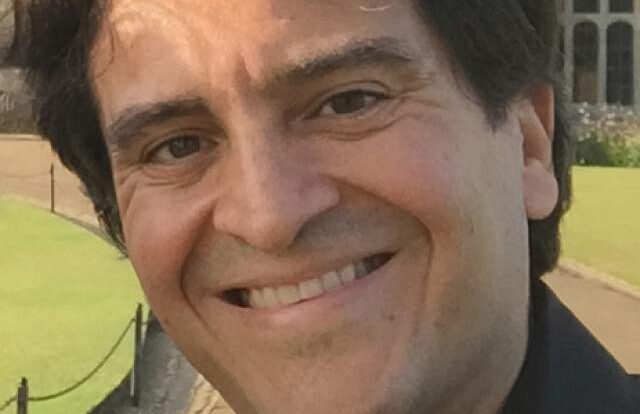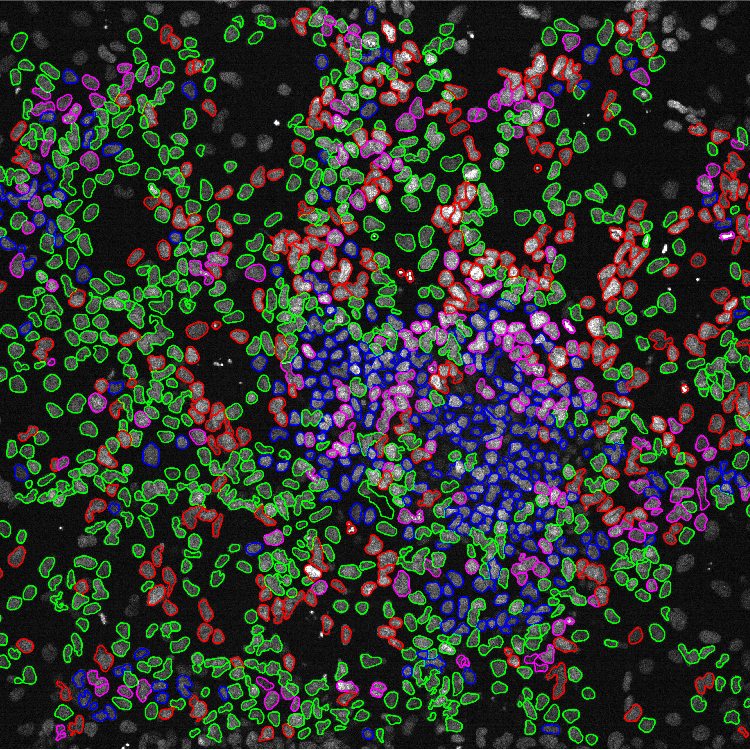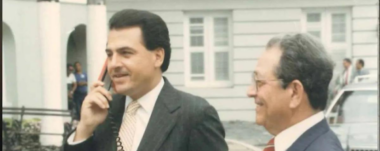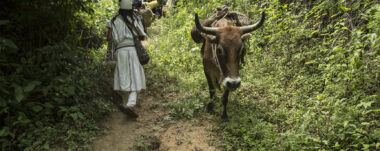Key Figures: Rafael Carazo Salas, Scientist

Rafael Edgardo Carazo Salas is Costa Rican, winner of the 2001 Clodomiro Picado Award and professor. He holds the Chair of Biomedical Sciences at the University of Bristol in the United Kingdom. He is currently a member of the Alan Turing Institute (the UK’s national Artificial Intelligence Institute), as well as co-founder of the biotechnology company Adrestia Therapeutics and founder of the Artificial Intelligence and biotechnology company CellVoyant Technologies Ltd.
Trajectory of Rafael Carazo
After graduating from high school in San Jose, Costa Rica, he studied undergraduate and graduate physics, mathematics and cell biology in Montreal and at CERN (the European particle accelerator in France/Switzerland), Cambridge and Paris. At CERN he contributed to the search for a new type of subatomic particle, the Bc meson, analyzing millions of particle tracks in what was his first introduction to data science and Big Data.
Dr. in cell biology and biophysics at the European Molecular Biology Laboratory in Heidelberg, Germany, he contributed to the discovery of a new class of molecular mechanisms that enable cells to carry out cell division, the fundamental process by which our bodies produce new cells and also one of the processes that when defective can contribute to tumor formation.
For the findings of his doctoral work Rafael Carazo was awarded the Costa Rican National Science Prize ‘Clodomiro Picado Twight’ 2001.
After his PhD he did his postdoctoral training in genetics with Sir Paul Nurse (Nobel Prize 2001) in London and at Rockefeller University in New York. He then became an independent researcher and started leading his own research group. First at the Swiss Federal Institute of Technology in Zurich (ETH Zurich) for 2 years and then at Cambridge University in the UK for 7 years before obtaining a permanent professorship in Bristol.
Rafael Carazo’s Research Projects
For more than 25 years he has conducted interdisciplinary research in the areas of quantitative cell biology, functional genomics, systems biology and cell microscopy. He has made important contributions to many areas of cell biology as well as playing a prominent role in the area of biomicroscopy, for example by co-founding the Image Data Resource, probably the largest biomicroscopy database in the world and now managed by the European Bioinformatics Institute in England.
Over the past 10 years, his group’s research has focused largely on discovering how genes and proteins that control basic cellular processes (such as cell growth, cell division and cell differentiation) operate over time within cells. He also focused on how these genes and proteins function collectively as “networks” that allow cells to maintain their normal function as well as what happens to these gene and protein circuits when cells function abnormally in pathological situations.
For this purpose, they develop and use innovative quantitative cell biology technologies such as 3D high-throughput/high content microscopy and biological Big Data analysis methods. Using these technologies and applying them to simple “model experimental organisms” such as yeast, they succeeded in discovering hundreds of new genes and gene cascades that control in a coordinated way basic cell functions, such as the control of cell shape, cell cytoskeleton, cell cycle and cell polarity.
Cells and Artificial Intelligence
More recently in the last 5 years his group has developed and combined cutting-edge technologies such as human Pluripotent Stem Cells (hPSCs), gene editing using CRISPR, high throughput/high content microscopy and Artificial Intelligence (AI) to investigate how human tissues are formed from stem cells and how those tissues modify their cellular composition over time.
Building on this basic science from his university laboratory, he founded CellVoyant Technologies Ltd, an Artificial Intelligence and biotechnology company, in 2021. CellVoyant’s mission is to optimize and industrialize the robust production of high-precision human tissue stem cells for clinical and regenerative medicine applications.
His personal and scientific goal is to contribute to treat and/or eradicate a wide range of chronic diseases (cancer, Parkinson’s, Alzheimer’s) using the regenerative power of stem cells. His goal as an entrepreneur is to make that vision a reality by combining the latest in human stem cell technologies and Artificial Intelligence in order to make it possible in the not too distant future to produce replacement tissues for all types of tissues and for anyone, in a safe and robust way. A bit like in “Star Wars” where, by cutting off a hand, it can regenerate”.
Impact for Costa Rica
High level science is a highly interdisciplinary and international activity. In Rafael’s case, his scientific career has led him to work in many renowned institutes collaborating with top scientists. He has helped to train thousands of young scientists from all over the world in renowned universities. At these universities he has also directly trained dozens of young scientists (from students to postdoctoral researchers) in his research group. Many of those trained in his group have in turn gone on to hold positions in high caliber centers and institutions (academic institutions such as e.g. Harvard/MIT, Stanford, Cambridge, Ecole Polytechnique, Max Planck Institute, etc. and global companies such as e.g. AstraZeneca).
The results of his research over the years have been published in the highest scientific journals globally e.g. Nature, Science, Cell, etc, and his research has been funded by renowned funds including Cancer Research UK, The Wellcome Trust, Human Frontier Science Program, European Research Council. He has also lectured at countless scientific institutions and forums worldwide, giving decades of global exposure to the work and discoveries of his team.
“In each of these activities I have represented Costa Rica with pride and at the highest scientific level worldwide, which has undoubtedly helped to give projection and impact to Costa Rica on the scientific map globally,” says Rafael Carazo.

Challenges of the Past, Present and Future
We live in a unique and fantastic era in which cutting-edge biomedical research and cutting-edge medical research are for the first time one and the same. This means that biomedical discoveries made in the laboratory can become new medical treatments within a few years. The revolution of the last 15 years in human stem cell technologies makes it possible already today to create in the laboratory countless human tissues that could potentially be used one day to replace damaged or aged tissues in patients.
However, the challenge for the future is to turn those laboratory findings into a therapeutic reality, which will require developing technologies that allow a wide range of human tissues to be produced from anyone’s cells in a safe and robust manner. The goal of my academic research and my company CellVoyant is to make that vision and promise a reality.
Author: M. Barrantes in collaboration with Rafael Edgardo Carazo Salas for Sensorial Sunsets
Sources
Navigate articles




